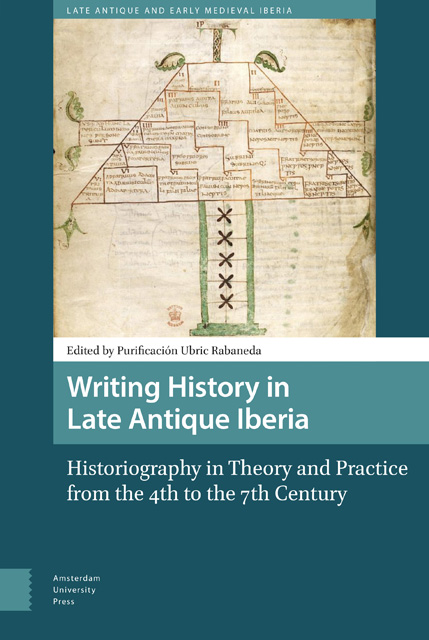 Writing History in Late Antique Iberia
Writing History in Late Antique Iberia Published online by Cambridge University Press: 18 April 2023
Abstract
This chater presents a reinterpretation of the confrontation between Bishop Masona and King Leovigild narrated in the Vitas Patrum Emeritensium . Trying to elucidate what historical truth there may be behind this hagiographic text, this event is compared with the information we have through other sources and more recent historiography. The image offered by this work of a persecuting Leovigild and of Masona, as a victim of that persecution is presented as a continuation of the martyr literature based on the opposition of the Christian ‘martyr’ to the tyrannical emperor and ‘persecutor’. In this way, Leovigild, far from being the evil king portrayed in the Lives, appears as a monarch whose religious policy was characterised by tolerance.
Keywords: martyr, persecutor, Arianism, history, hagiography, Vitas Patrum Emeritensium
Pedro Castillo Maldonado began his essay on ‘Catholics and Arians in Visigothic Spain: The Conformation of a Unified System of Domination’ by referring to the historical painting by José Martí y Monsó, found in the Spanish Senate, which praises Reccared’s conversion to Nicene Catholicism in 589: ‘Due to its iconographic imagery, which was a bit outmoded, quite static and of dubious artistic quality, the spectator gets the impression of watching a historical event, the Third Council of Toledo, solemn and peaceful’. We prefer to remember the work by Antonio Muñoz Degrain on the same subject, also commissioned by the Senate in 1888, and, thanks to its success, according to Tomás Pérez Veo, became the ‘true’ image of the historical event, even displacing that of Martí y Monsó, the traditional painting until that time. However, as Pérez Viejo himself recalls, ‘Reccared’s presence in the symbolic buildings of the State, temples of the nation, was not limited to the Senate. The Visigothic monarch is among those who appear on the decorated ceiling of the sessions hall of the Congress (work of Carlos Luis de Ribera), in the company of – to make the reasons for his presence clear – Saint Isidore of Seville’. Somehow, each of them tried to illustrate the idea of the official historian of the period, Modesto Lafuente, considered to be the most important figure of the liberal and conservative Spanish historiography.
To save this book to your Kindle, first ensure [email protected] is added to your Approved Personal Document E-mail List under your Personal Document Settings on the Manage Your Content and Devices page of your Amazon account. Then enter the ‘name’ part of your Kindle email address below. Find out more about saving to your Kindle.
Note you can select to save to either the @free.kindle.com or @kindle.com variations. ‘@free.kindle.com’ emails are free but can only be saved to your device when it is connected to wi-fi. ‘@kindle.com’ emails can be delivered even when you are not connected to wi-fi, but note that service fees apply.
Find out more about the Kindle Personal Document Service.
To save content items to your account, please confirm that you agree to abide by our usage policies. If this is the first time you use this feature, you will be asked to authorise Cambridge Core to connect with your account. Find out more about saving content to Dropbox.
To save content items to your account, please confirm that you agree to abide by our usage policies. If this is the first time you use this feature, you will be asked to authorise Cambridge Core to connect with your account. Find out more about saving content to Google Drive.